1860: away with the fleur-de-lis
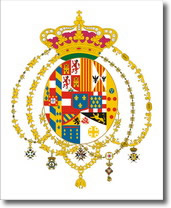
- Coat-of-arms of the Royal House of Bourbon - Two Sicilies
History and chronicles tell us how frequently, when there is a political upheaval, the symbols of the government that has just been ousted are removed.
This is what happened when the Kingdom of the Two Sicilies collapsed. In fact, as a chronicler of the times narrates, the removal was prudently anticipated: "On the morning of the fifth of September (1860) (...) the King left the palace in an open coach with the Queen and two gentlemen. (...)
Just where the rod of Chiaia begins, they were forced to stop by a jam of coaches and carts. In one of the first shops, below the guest quarters, which is now the prefecture, was the royal pharmacy Ignone, whose shop sign bore the Borbon fleur-de-lis. A ladder leading against the sign was what was holding up the traffic. The King stopped and saw that some workmen up the ladder were pulling the fleur-de-lis off the sign".
The day after, Francesco II, the last sovereign of the Bourbon-Two Siciliesdynasty, left Naples for good and on 7 September Garibaldi made his triumphant entrance into the city.
The old royal symbol
The so-called fleur-de-lis of France, symbol of the Capetian kings, had a place of pre-eminence on the coat-of-arms of the Bourbon - Two Sicilies dynasty: there were three of them on a light ble field of the central escutcheon; they represented direct descent from Bourbon of the French House to which the kings San Luigi IX and Charlemagne belonged.
Surmounting the royal crown, the fleur-de-lis were a synthetic representation of the dynasty's coat-of-arms.
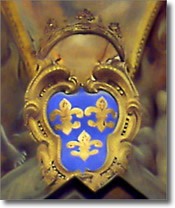
- Church of San ferdinando, interior, detail with crowned shield of the Bourbons
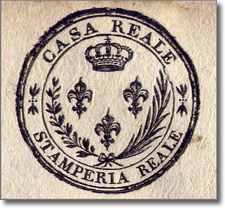
- Emblem of the Royal Printing Office
The fleur-de-lis ... uprooted from the palazzo and elsewhere
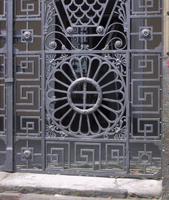
- Detail of the gate as it was and as it is today
We have recounted the fate of the fleur-de-lis of the royal pharmacy, and the same fate awaited the emblems on the exterior and interior of Palazzo San Giacomo, the building that had been used for the ministeries of the reign of the Bourbons.
In the ancient gate shut in the portal which is to the left of the façade of the building, it is still possible to see the spaces which were once occupied by the Bourbon fleur-de-lis.
In fact, the circular metal decorations representing garlands of laurel and oak leaves surround only the iron structures to which were fixed the royal emblems (see animation). But this this not the only trace of removal on the façade.
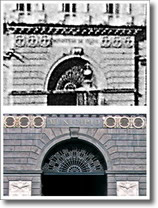
- The contrasting images clearly show that the fleur-de-lis is now absent
Above the main portal giving access to the palazzo, on the sides with the plaque with the word "MUNICIPIO", there were once six (three on each side) garlands of oak and laurel leaves that can still be seen today but which, until 1860, each framed a fleur-de-lis(as can be seen from the image which contrasts a photograph of 1858-59 with one of today).
These were the removals from the façade, but they suffered the same fate inside. The railings of the main stairway, at the height of the first landing and that at the top of the third floor, have no fleur-de-lis, but did before 1860 (as is shown by a print of the time).
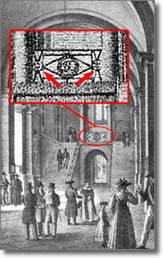
- Detail of a print from Cuciniello-Bianchi, Viaggio pittorico nel Regno delle Due Sicilie, Vol.I, Naples, 1829
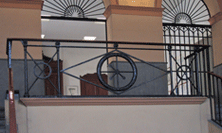
- The interior railings as they were and as they are today
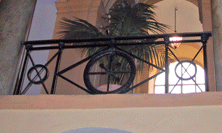
The hunt for the Bourbon fleur-de-lis took place also in other parts of the city. Here are images of another three "transformed" railings. They are the railings surrounding the equestrian statues in the piazza which, after 1860, was given the name of Piazza del plebiscito (the first is a detail of a photograph dated between 1858 and 1859, the second a detail of another taken some time later). Inside these garlands today is the coat-of-arms of the Commune of Naples.
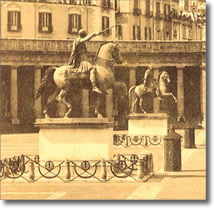
- Piazza del plebiscito, the railings around the equestrian statues before the fall of the Kingdom of the Two Sicilies
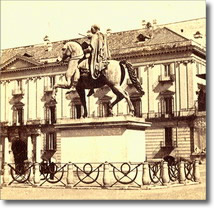
- Piazza del Plebiscito, the railings around the equestrian statues after the fall of the Kingdom of the Two Sicilies